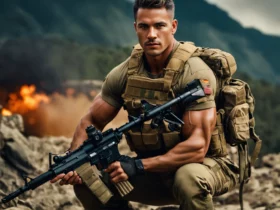Physical fitness is a cornerstone of survival during crisis situations. The ability to endure, adapt, and overcome challenges hinges upon one’s physical preparedness. This article elucidates the significance of survival fitness, its components, training methodologies, and how it empowers individuals to navigate crises effectively.
Understanding the Role of Survival Fitness in Crisis Scenarios
Survival fitness is a vital tool enabling individuals to thrive in challenging conditions by adapting swiftly to unforeseen circumstances. It cultivates endurance, fortitude, and mental resilience, crucial attributes during prolonged emergencies. A key aspect lies in resource optimization, as those who are physically fit can conserve energy, swiftly make decisions, and efficiently execute tasks—essential skills in situations with limited resources. Furthermore, survival fitness prioritizes functional strength and essential skills, ensuring individuals remain physically capable and well-prepared to navigate and overcome the demands of crises.

Components of Survival Fitness for Crisis Preparedness
- Cardiovascular Endurance: Vital for sustained activity, cardio fitness ensures individuals can endure prolonged stress and exertion during crises.
- Strength and Functional Power: Building strength aids in performing physically demanding tasks like lifting, carrying, or self-defense in crisis situations.
- Agility and Flexibility: Agility training enhances mobility, enabling swift movements and flexibility for maneuverability in unpredictable environments.
- Mental Toughness: A crucial aspect of survival fitness, mental toughness cultivates resilience, stress management, and adaptability under duress.
Training Methodologies for Survival Fitness
- Functional Exercises: Incorporate exercises mimicking survival scenarios, such as carrying heavy loads, climbing, or functional movement drills.
- Interval Training: High-Intensity Interval Training (HIIT) simulates bursts of intense activity followed by short recovery periods, enhancing endurance and resilience.
- Combat and Self-Defense Training: Integrating self-defense techniques prepares individuals for physical confrontations, fostering confidence and readiness.
- Outdoor Survival Skills: Outdoor training, such as hiking, camping, or orienteering, hones skills crucial for survival in natural environments.
Empowering Individuals Through Survival Fitness
Survival fitness stands as a fundamental pillar supporting individual self-sufficiency, enabling people to traverse crises independently and reduce dependency on external aid. This multifaceted approach to physical readiness goes beyond mere strength or endurance; it encapsulates a mindset of adaptability. Through consistent training and conditioning, individuals refine their capacity to fluidly adapt to shifting circumstances and unforeseen challenges, honing the agility needed to thrive amidst unpredictability.
Moreover, the dividends of physical preparedness extend beyond the body, transcending into mental fortitude. As individuals develop their physical capabilities, they concurrently foster a sense of confidence and mental clarity. This mental acuity becomes a guiding compass during tumultuous times, empowering individuals to make astute decisions and employ critical thinking even under immense pressure. This amalgamation of physical and mental readiness forms a resilient foundation for navigating adversities.
Beyond the individual, the significance of a community bound by fitness and preparedness cannot be overstated. A collective of physically fit individuals within a community serves as a bastion of strength during crises, fostering a support network that thrives on collaboration and mutual aid. Their shared readiness not only amplifies the community’s capacity to withstand challenges but also engenders a culture of unity and support where each member contributes to the collective resilience, creating a fabric that fortifies the entire community against adversities.
Conclusion
Survival fitness serves as a foundational pillar in crisis preparedness, offering the physical and mental fortitude needed to navigate challenging situations. By honing cardiovascular endurance, strength, agility, and mental toughness through targeted training methodologies, individuals become better equipped to face uncertainties. Embracing survival fitness isn’t merely about physical prowess; it’s about developing a holistic approach to preparedness, ensuring readiness to confront and conquer crises with resilience, adaptability, and the strength to emerge victorious. Investing in survival fitness is an investment in personal resilience, empowerment, and the ability to thrive even in the face of adversity.






